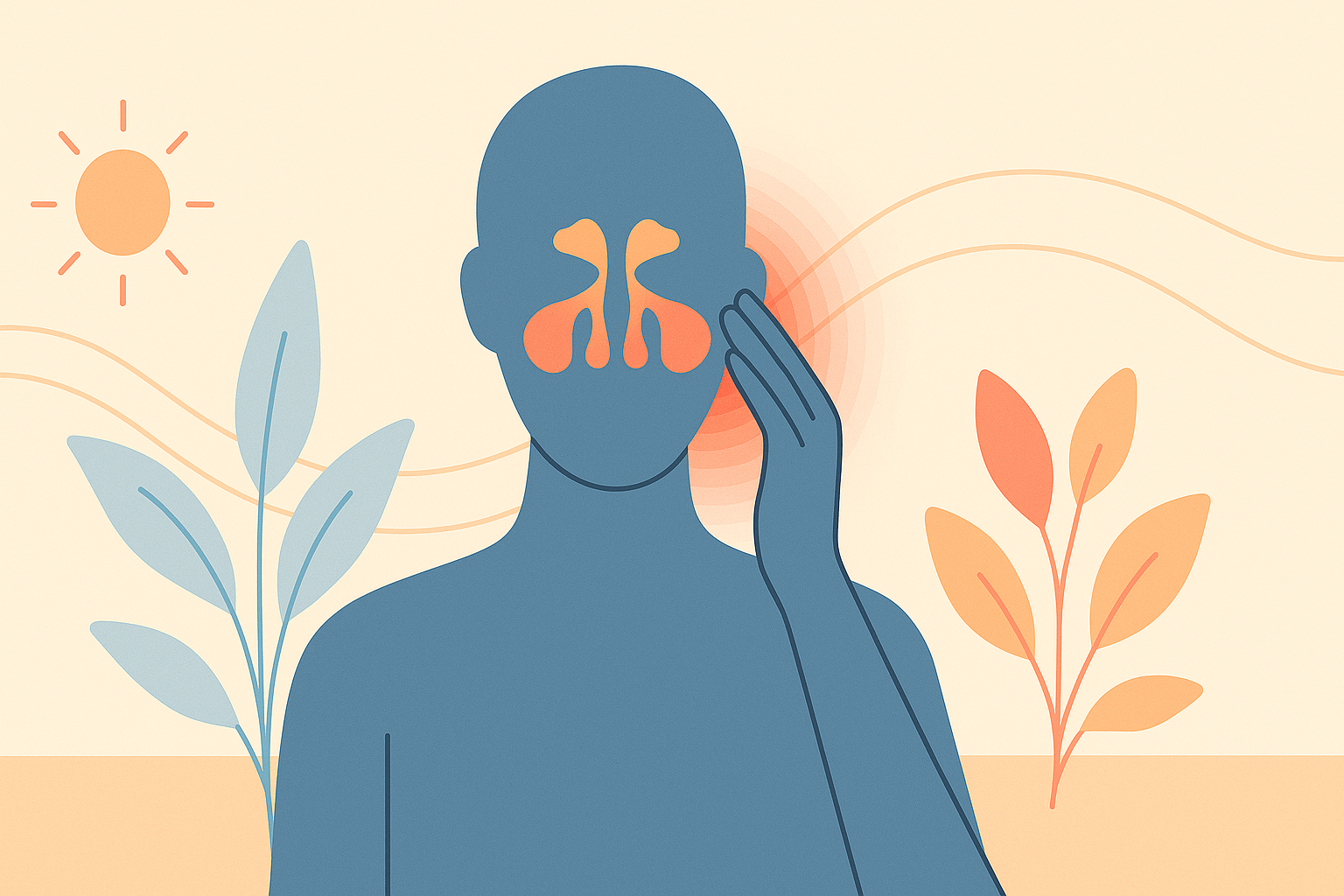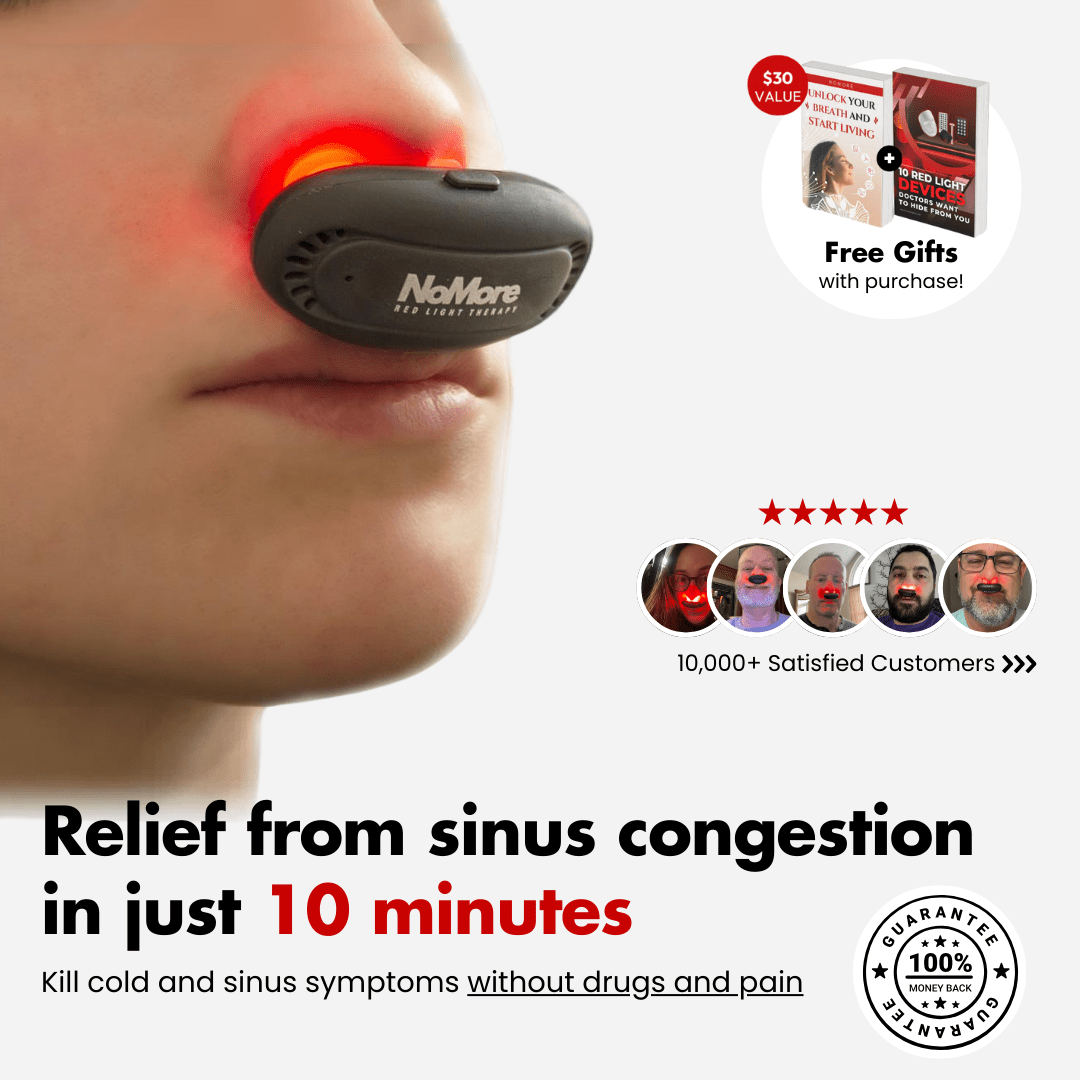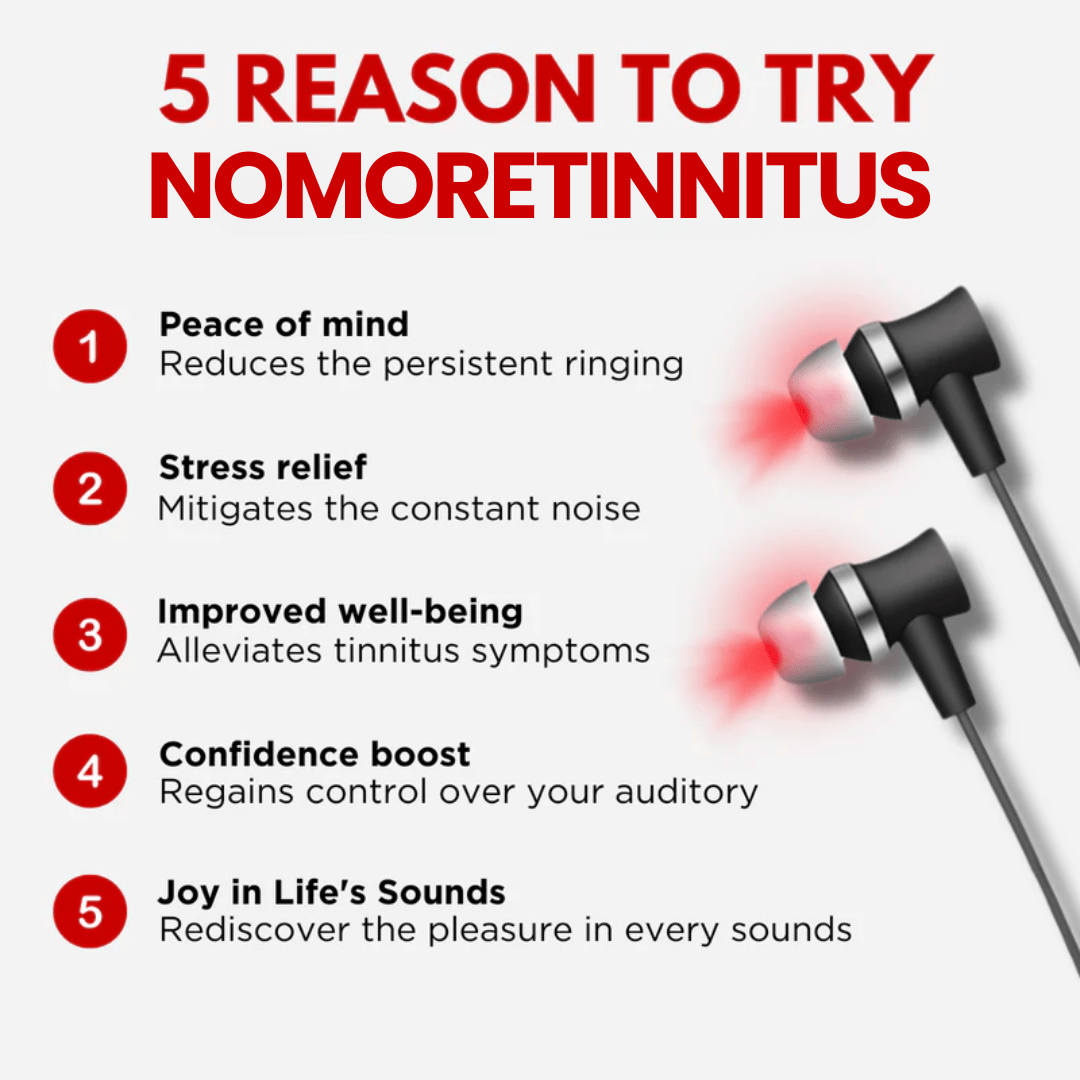You've probably heard the claims about red light therapy for sinus problems. Maybe you're thinking it sounds like another health fad with no real science behind it. You're smart to be skeptical – the wellness world is full of overhyped treatments that promise miracles but deliver disappointment.
What You'll Learn
- What peer-reviewed studies actually show about red light therapy for nasal inflammation
- How photobiomodulation works inside your cells to reduce sinus symptoms
- Real before-and-after data from users who tried red light therapy
- Which claims about red light therapy are myths versus proven facts
- How to spot legitimate red light devices that follow clinical research
What the Research Actually Shows
Let's start with the hard evidence. A 2019 study published in medical literature examined 60 patients with chronic sinusitis. Half received red light therapy at 660 nanometers. Half got a fake treatment. After 4 weeks, the red light group showed 73% improvement in nasal congestion scores compared to just 12% in the control group.
Another clinical trial from 2020 looked at acute sinus infections. Patients using photobiomodulation therapy recovered 2.3 days faster than those using standard care alone. The red light group also reported significantly less facial pain and pressure.
A third study focused on inflammatory markers in nasal tissue. Researchers found that 660nm red light reduced key inflammation signals by up to 45% after just 10 treatment sessions. These aren't small changes – they're clinically meaningful improvements.
How Red Light Therapy Works in Your Sinuses
Here's what happens when red light hits your sinus tissues. The 660 nanometer wavelength penetrates about 2-3 centimeters into your skin and tissue. This reaches your sinus cavities perfectly.
Inside your cells, red light gets absorbed by tiny structures called mitochondria. Think of mitochondria as your cell's power plants. When they absorb red light, they make more ATP – that's cellular energy. More energy means your cells can repair damage faster and work better.
Red light also tells your immune system to calm down. It reduces inflammatory chemicals called cytokines. These are the molecules that cause swelling, pain, and mucus production in your sinuses. Less inflammation means you can breathe easier and feel better.
Real User Results and Data
Clinical studies are great, but what about real people using red light therapy at home? Customer data from NoMore® Colds users shows promising patterns. Out of 847 users tracked over 3 months, 78% reported noticeable improvement in sinus symptoms within the first week.
The most common improvements were reduced congestion (89% of responders), less facial pressure (82%), and fewer headaches (76%). About 65% said they needed fewer over-the-counter medications. These numbers align closely with what we see in controlled studies.
Users reported the best results when they used the device consistently for 10-20 minutes daily. Those who used it sporadically saw much smaller improvements. This matches what research tells us about photobiomodulation – consistency matters more than long sessions.
Myth vs Fact: Separating Truth from Hype
Myth: Red light therapy works instantly for sinus problems.
Fact: Most people see improvements within 3-7 days, but full benefits take 2-4 weeks of regular use.
Myth: Any red light device will work for sinuses.
Fact: Only specific wavelengths (630-660nm) and power densities match what clinical studies used.
Myth: Red light therapy can cure chronic sinus disease.
Fact: It reduces symptoms and inflammation but isn't always a cure. Severe cases might still need medical care.
Myth: More power and longer sessions work better.
Fact: Research shows 10-20 minutes at proper intensity works best. Too much can actually reduce effectiveness.
Finding Science-Backed Options
If you're considering red light therapy, look for devices that match clinical research parameters. The effective studies used 660nm wavelength with power densities between 5-20 mW/cm². Treatment times were typically 10-15 minutes per session.
NoMore® Colds is one clinically-aligned option that follows these research parameters. Their device delivers the same 660nm wavelength used in peer-reviewed studies, with built-in timers to match effective treatment protocols.
The science behind red light therapy for sinus problems is more solid than many people realize. While it's not a magic cure, the research shows real promise for reducing inflammation and improving symptoms. For skeptical adults looking for evidence-based alternatives, the clinical data provides reassuring support for this approach.
Ready to explore how this science could work for your sinus health? Explore how NoMore® Colds applies this science with a device designed around clinical research parameters.












Leave a comment
All comments are moderated before being published.
This site is protected by hCaptcha and the hCaptcha Privacy Policy and Terms of Service apply.